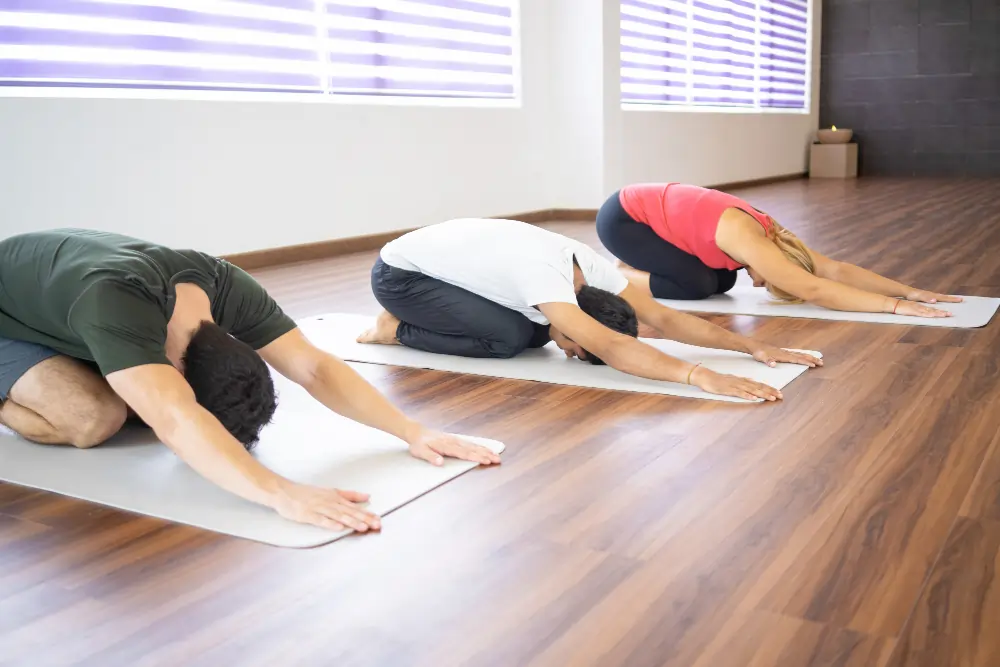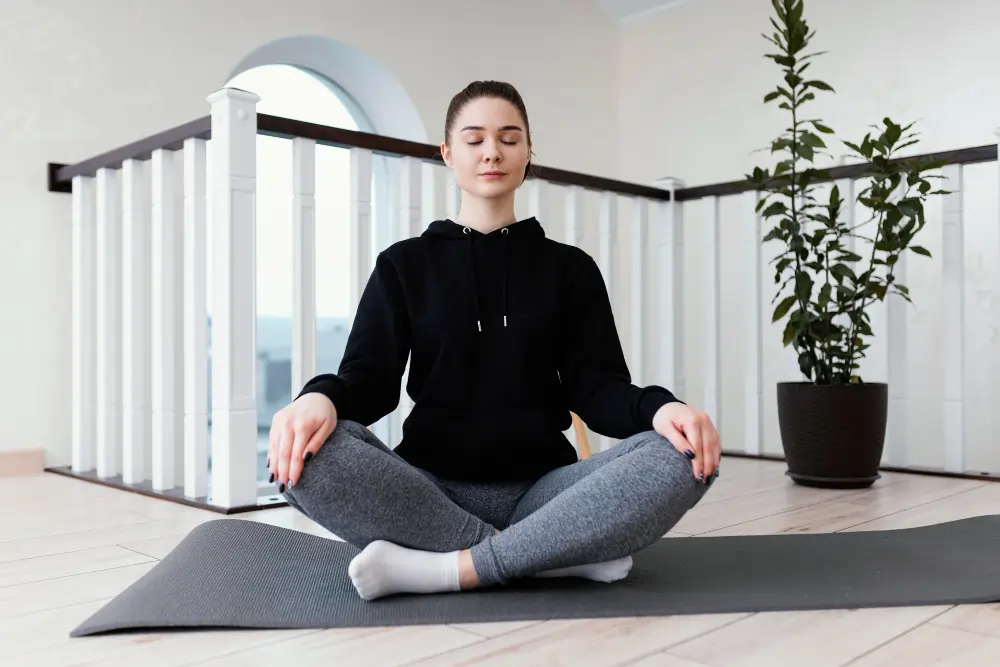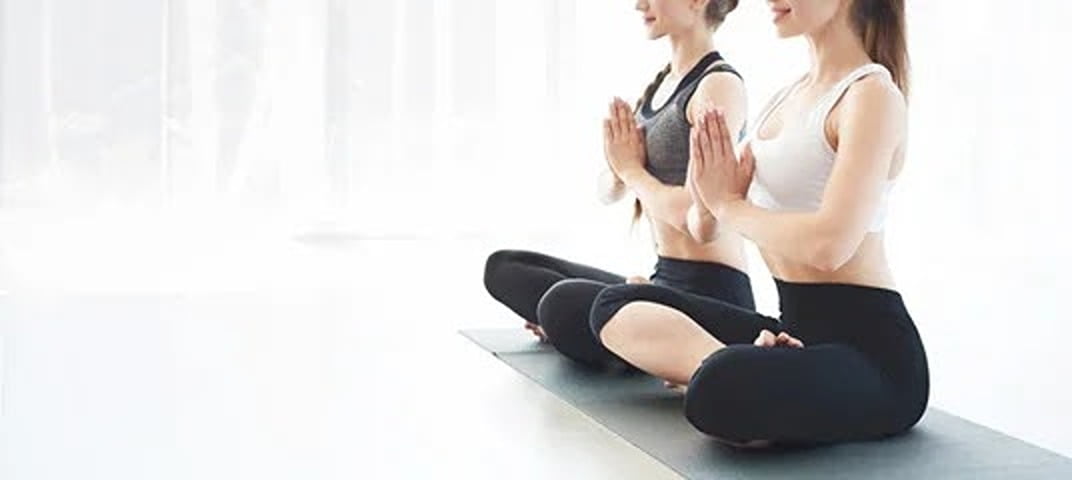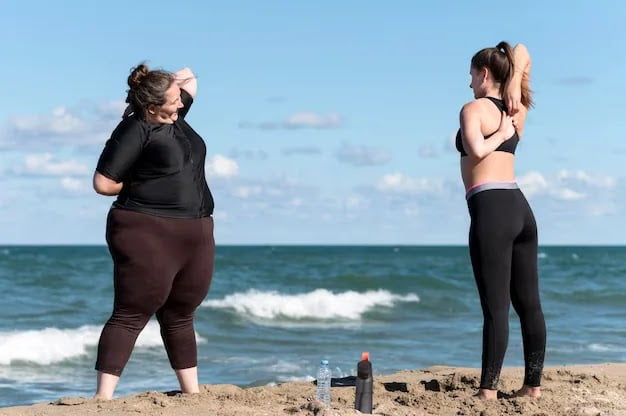
Discover the transformative power of yoga – a practice that knows no boundaries. In this captivating article titled “Yoga 101: For Everyone, Regardless of Age or Fitness Level”, we delve into the realm of holistic wellness and explore how yoga transcends age and fitness limitations. Get ready to embark on a journey of self-discovery, rejuvenation, and personal growth as we unravel the universal appeal of yoga and its potential to nurture both body and mind. Join us as we unravel the secrets of this ancient practice and unlock a world of possibilities for individuals of all ages and fitness levels.
From Kids to Seniors: The Universal Appeal of Yoga
Yoga, with its innate wisdom, transcends age barriers, offering a transformative journey for individuals of all generations. Whether you’re a playful child or a wise senior, the practice of yoga embraces every stage of life with open arms. It has the remarkable ability to adapt and cater to the unique needs of each individual, making it a truly universal practice.
One of the key aspects that sets yoga apart is its adaptability. Regardless of age or fitness level, yoga can be modified and customized to suit the specific requirements of every practitioner. For children, it becomes an avenue for creative expression, enhancing their flexibility, balance, and coordination while nurturing their imaginative spirits. As they grow older, yoga provides a safe space for adolescents to navigate the challenges of their changing bodies and minds, fostering self-acceptance and emotional well-being.
Yoga also holds immense benefits for adults, enabling them to find solace in the midst of a hectic lifestyle. It offers a holistic approach to fitness, addressing physical strength, flexibility, and cardiovascular health. Moreover, as adults face the pressures of daily life, yoga presents a sanctuary for stress relief, mental clarity, and mindfulness. It becomes a gentle reminder to slow down, breathe, and reconnect with oneself.
Even in the golden years of life, yoga continues to be a guiding light. Seniors can experience improved mobility, joint health, and balance through gentle yoga practices tailored to their needs. With an emphasis on gentle movements, breathwork, and meditation, yoga becomes a powerful tool for promoting overall well-being, reducing the impact of age-related ailments, and fostering a sense of connection and purpose.
Poses for Every Stage of Life: Embracing Inclusivity

Yoga is a practice that welcomes everyone, regardless of age or experience level. It offers modified poses that cater to beginners, seniors, and young practitioners, ensuring inclusivity throughout the journey of yoga.
For beginners, modified poses provide a gentle introduction to the practice. These poses focus on building strength, flexibility, and body awareness, while also emphasizing proper alignment and safety. Beginner-friendly variations of common poses such as downward dog, warrior poses, and seated twists allow individuals to gradually ease into the practice, gradually progressing at their own pace.
Seniors, with their unique needs and considerations, can benefit from modified poses that prioritize stability and joint health. Gentle standing poses, chair yoga, and restorative poses provide a safe and accessible approach for seniors, promoting mobility, balance, and relaxation. These poses are often adapted to accommodate physical limitations, ensuring a comfortable and enjoyable experience for older practitioners.
Young practitioners, including children and adolescents, require poses that engage their energy and spark their imagination. Playful and interactive poses, such as animal-inspired poses or partner poses, allow young yogis to explore movement, build strength, and cultivate focus. These modified poses make the practice engaging and enjoyable, creating a positive association with yoga from an early age.
Emphasizing inclusivity, yoga encourages practitioners to honor their bodies and practice non-judgment. It focuses on individual progress rather than comparison, fostering a supportive and accepting environment for all. Inclusive modifications and variations of poses ensure that everyone, regardless of age or physical ability, can participate and benefit from the practice.
Gentle Strength: Yoga’s Low-Impact Benefits
Yoga is often associated with flexibility and relaxation, but it also offers a unique approach to building strength without strain. It debunks the common myth that yoga is only for the fit and showcases how it can benefit individuals of all fitness levels.
Unlike high-impact exercises that can put stress on the joints and muscles, yoga focuses on controlled movements and proper alignment. Through a series of asanas (poses), yoga gradually builds strength by engaging various muscle groups in a balanced manner. It targets both large and small muscles, including the core, arms, legs, and back, promoting overall strength and stability.
One of the key aspects of yoga is the use of bodyweight resistance. By utilizing the resistance of one’s own body, yoga helps develop functional strength, meaning strength that can be applied in everyday activities. This low-impact approach reduces the risk of injury, making yoga accessible to individuals with different fitness levels or physical limitations.
Moreover, yoga emphasizes mindful awareness of the body and breath while performing each pose. This mind-body connection allows practitioners to cultivate strength not only physically but also mentally. By focusing on breath control and staying present in the moment, individuals can tap into their inner reservoirs of strength, resilience, and concentration.
Yoga’s low-impact nature and adaptability make it suitable for people of all ages and fitness backgrounds. It provides modifications and variations for different abilities, ensuring that everyone can participate and benefit from the practice. Whether you are a beginner or an experienced yogi, yoga can be tailored to meet your individual needs and goals.
Mindfulness Knows No Age: Yoga and Stress Reduction
Yoga, a practice rooted in mindfulness, has the power to transcend age barriers when it comes to stress reduction. By fostering a deep connection between the mind and body, yoga offers valuable tools to address and manage stress across different life stages.
Stress is an inherent part of life, affecting individuals of all ages. Whether it’s the pressures of school and exams for students, the responsibilities of work and family for adults, or the challenges of aging for seniors, stress can manifest in various ways. Yoga provides a holistic approach to combat stress by promoting self-awareness, relaxation, and inner balance.
Through the practice of yoga, individuals of all ages can cultivate mindfulness, which involves being fully present and non-judgmental in the current moment. This mindful awareness allows practitioners to observe their thoughts, emotions, and bodily sensations without getting caught up in them. By bringing attention to the present, yoga helps break the cycle of stress and anxiety that often stems from dwelling on the past or worrying about the future.
Yoga incorporates breathwork, meditation, and gentle movements that encourage a state of relaxation and calm. These practices activate the parasympathetic nervous system, which counteracts the body’s stress response. By consciously slowing down the breath, quieting the mind, and engaging in gentle stretches and postures, yoga helps release tension, reduce cortisol levels, and promote a sense of inner peace.
Addressing stress across different life stages, yoga offers tailored approaches to meet the specific needs and challenges faced by individuals of different ages. For students, yoga can provide valuable tools to manage academic pressure and improve focus. For adults, it can serve as a coping mechanism for work-related stress and the demands of daily life. For seniors, yoga offers gentle movements to enhance mobility, alleviate physical discomfort, and promote overall well-being.
Mindfulness knows no age, and yoga serves as a powerful bridge to connect individuals of all generations in their pursuit of stress reduction and inner peace. By incorporating yoga into our lives, we can cultivate a mindset of mindfulness, resilience, and self-care that transcends age and empowers us to navigate life’s challenges with grace and equanimity.
Breathe In, Breathe Out: Yoga’s Lifelong Gift

Yoga offers a lifelong gift through the practice of pranayama, the art of conscious breathing. By placing emphasis on the breath, yoga provides a powerful tool for stress relief that is portable and accessible to us at all times.
Pranayama, which translates to “extension of the life force,” involves various breathing techniques that enhance the flow of prana (life energy) in the body. Through deep and intentional breathwork, pranayama revitalizes the body, calms the mind, and brings a sense of balance and harmony.
One of the significant benefits of pranayama is its ability to reduce stress and anxiety. When we are stressed, our breath becomes shallow and rapid. By practicing pranayama, we learn to slow down and deepen our breath, activating the body’s relaxation response. This triggers a cascade of physiological changes, including a decrease in heart rate, blood pressure, and cortisol levels, promoting a state of calmness and inner tranquility.
The breath is a portable stress relief tool that is always available to us, no matter where we are or what situation we find ourselves in. In moments of stress or overwhelm, simply taking a few conscious breaths can instantly shift our state of mind. By focusing on inhalation and exhalation, we anchor ourselves in the present moment, allowing us to find clarity, centering, and a renewed sense of calm.
Beyond stress relief, pranayama offers a multitude of benefits for our overall well-being. It improves lung capacity, enhances oxygenation of the blood, and boosts energy levels. It also supports mental clarity, concentration, and emotional balance. Regular practice of pranayama can help us cultivate a deep connection with our breath, unlocking a vast source of vitality, inner peace, and self-awareness.
Yoga’s lifelong gift lies in the practice of pranayama and the recognition of the breath as a powerful tool for stress relief. By incorporating conscious breathing into our daily lives, we can tap into the transformative potential of our breath, experiencing a profound sense of well-being, and navigating life’s challenges with greater ease and resilience. So, take a moment, breathe in, breathe out, and embrace the lifelong gift that yoga offers through the power of the breath.
Core Stability for All
In the realm of yoga, core stability plays a vital role in enhancing our practice and supporting our daily activities. Through specific engagement techniques, yoga emphasizes the importance of a strong and stable core that goes beyond physical fitness.
Core engagement in yoga involves activating and strengthening the muscles of the abdomen, lower back, and pelvic floor. This activation creates a solid foundation from which we can move with ease and stability. By consciously engaging the core, we cultivate a sense of grounding and balance, allowing us to explore various yoga postures and transitions with greater control and efficiency.
Beyond the physical benefits, core stability in yoga has a profound impact on our daily activities. Our core muscles serve as the central support system for our bodies, playing a crucial role in maintaining good posture and spinal alignment. By strengthening and stabilizing the core, we can alleviate back pain, improve posture, and enhance our overall body mechanics.
In our daily lives, whether we are sitting at a desk, lifting heavy objects, or engaging in physical activities, a strong core provides a solid foundation for movement and reduces the risk of injury. It enhances our balance and coordination, allowing us to perform tasks with greater ease and efficiency. Additionally, a stable core can contribute to better digestion, breathing, and overall body awareness.
The benefits of core stability extend beyond the physical realm. As we engage our core in yoga, we also tap into our center of power and inner strength. This connection between the physical and energetic aspects of the core fosters a deeper sense of self-confidence, resilience, and stability in our lives off the mat.
Whether you are a seasoned yogi or new to the practice, focusing on core stability is essential. By incorporating core engagement techniques into our yoga practice, we can build a strong foundation, enhance our physical abilities, and improve our quality of life outside of the yoga studio. So, let us embrace the significance of core stability in yoga and recognize its impact on our daily activities, enabling us to move through life with strength, grace, and stability.
Conclusion
I encourage everyone to embrace the practice of yoga as a powerful tool for universal well-being through mindful movement. Yoga offers a holistic approach to physical, mental, and emotional wellness, making it accessible to people of all ages and abilities.
By rolling out your mat and engaging in the practice of yoga, you open yourself up to a journey of self-discovery, self-care, and personal growth. Through the various yoga postures, breathing techniques, and meditation, you cultivate a deeper connection with your body, mind, and spirit.
Yoga is not just a physical exercise; it is a way of life that promotes balance, harmony, and inner peace. It teaches us to be present in the moment, to listen to our bodies, and to find stillness amidst the chaos of daily life. Through mindful movement, we learn to release tension, reduce stress, and cultivate a sense of calmness and clarity.
The beauty of yoga lies in its inclusivity. It is a practice that can be adapted to suit individual needs, regardless of age, flexibility, or fitness level. Whether you are a beginner or an experienced practitioner, the transformative power of yoga is available to all.
By embracing yoga, you embark on a journey towards improved physical strength, enhanced flexibility, and increased body awareness. But beyond the physical benefits, yoga nurtures our mental and emotional well-being. It helps us cultivate resilience, self-compassion, and a deeper understanding of ourselves and others.


